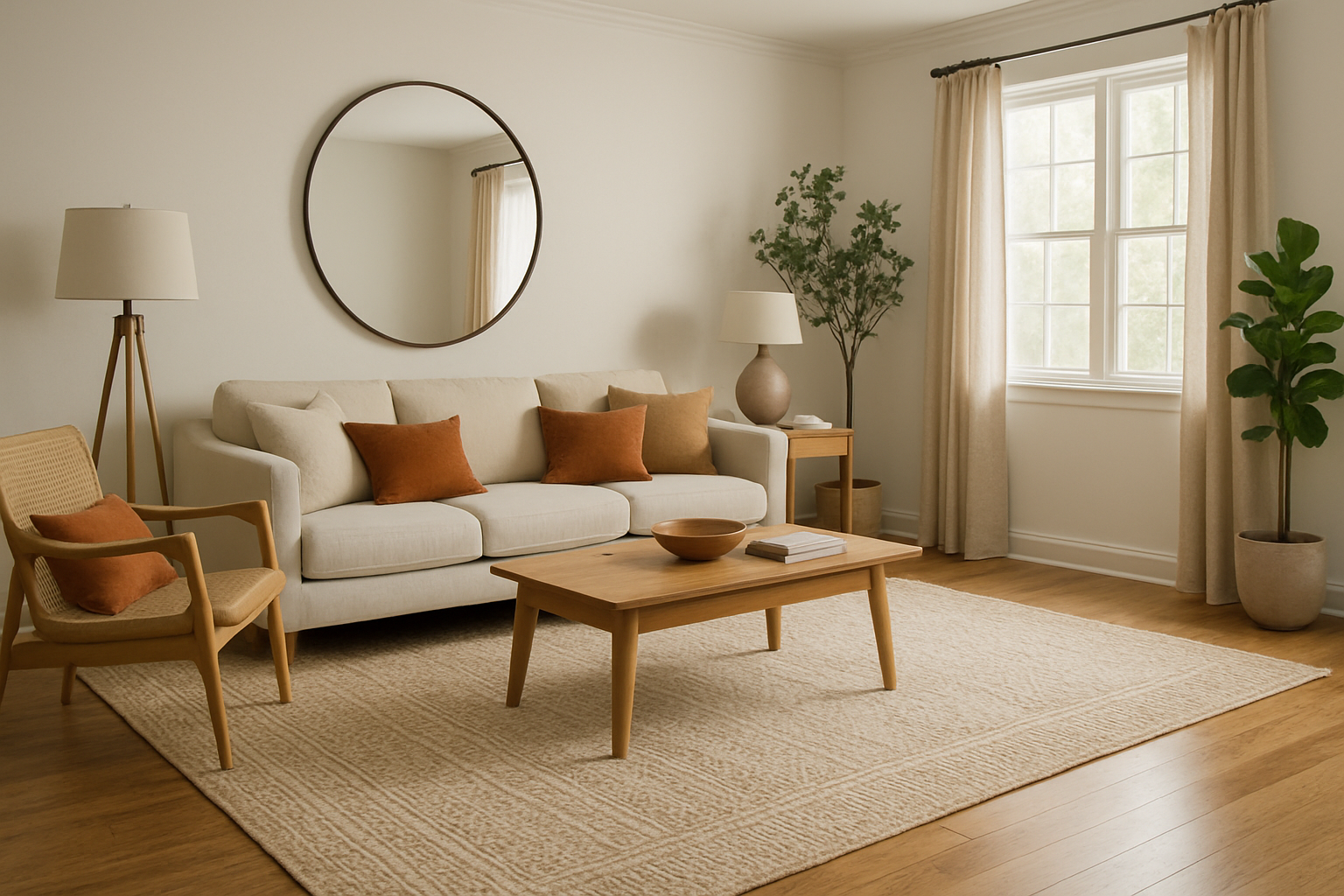Rugs are more than floor coverings — they’re powerful design elements that can transform the look and feel of any room. The right rug can anchor furniture, add warmth, and create visual harmony. Whether your style is modern, traditional, bohemian, or minimalist, rugs can help define spaces and elevate your home decor.
Aqui está um guia completo sobre como usar tapetes de forma estratégica e estilosa.
Understand the Role of Rugs
Rugs serve both practical and aesthetic purposes:
- Anchor furniture in open spaces.
- Define areas in open-concept homes (living, dining, or work zones).
- Add comfort underfoot, especially in bedrooms and living rooms.
- Bring texture and warmth to minimalist or modern designs.
- Introduce color and pattern without overwhelming a space.
Think of rugs as a foundation layer of design.
Choose the Right Size
One of the most common mistakes in rug decorating is choosing a rug that’s too small.
- Living room: Ideally, all front legs of sofas and chairs should sit on the rug. For large spaces, all furniture legs can fit within the rug’s area.
- Dining room: The rug should extend at least 60 cm (24 inches) beyond the table so chairs remain on it when pulled out.
- Bedroom: The rug should extend at least halfway under the bed, with extra space on both sides. Alternatively, two runners can be placed on each side of the bed.
- Hallways and kitchens: Runners are perfect to add style and comfort.
A rug that’s too small can make a room feel disjointed.
Pick the Right Material
The material you choose affects both the style and function of your rug.
- Wool: Durable, soft, and insulating — ideal for living rooms and bedrooms.
- Cotton: Lightweight and easy to clean — great for casual spaces.
- Synthetic fibers (polypropylene, nylon): Stain-resistant and affordable — perfect for high-traffic areas.
- Jute or sisal: Natural and textured — great for layering or rustic styles.
- Silk or viscose: Luxurious and soft — best for low-traffic, decorative areas.
Match the material to the room’s needs and your lifestyle.
Use Rugs to Define Spaces
Rugs are excellent tools for separating areas, especially in open-concept homes.
- Place a rug under the sofa and coffee table to define the living room.
- Use a rug under the dining table to create a dining zone.
- Add a rug in a home office to distinguish it from other parts of the house.
- Layer rugs to create depth and highlight different zones.
Rugs provide invisible “walls” without blocking space.
Play with Color and Pattern
Rugs can act as either a backdrop or a bold statement.
- Use neutral rugs to create balance in colorful rooms.
- Choose patterned rugs (stripes, geometric, floral) to add personality to minimalist spaces.
- Pick a rug that repeats accent colors in your pillows, curtains, or art.
- Use a contrasting rug to make furniture pop.
Patterns and colors can tie an entire room together.
Layer Rugs for Texture
Layering rugs adds texture, depth, and flexibility.
- Place a large neutral rug (like jute) underneath a smaller patterned rug.
- Use runners layered with mats for unique hallway looks.
- Mix textures like wool and cotton for a cozy, eclectic vibe.
This technique works well in boho or modern rustic homes.
Consider Shape Beyond Rectangles
Don’t limit yourself to rectangular rugs.
- Round rugs soften angular furniture layouts.
- Oval rugs work well under dining tables.
- Square rugs fit neatly in compact rooms.
- Abstract-shaped rugs add modern flair.
The shape of the rug should complement the furniture arrangement.
Keep Maintenance in Mind
Rugs require upkeep to stay beautiful and functional.
- Vacuum regularly to prevent dirt build-up.
- Rotate rugs to even out wear and sun exposure.
- Spot clean spills immediately.
- Choose darker or patterned rugs for high-traffic areas to disguise stains.
Practical care keeps rugs looking great for years.
Final Thoughts: Ground Your Decor with Rugs
Rugs are one of the most versatile elements in interior design. They define zones, add texture, bring warmth, and tie a room together. By choosing the right size, material, color, and placement, you can elevate your space effortlessly.
A well-chosen rug doesn’t just sit under your furniture — it transforms the entire atmosphere of your home.
